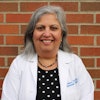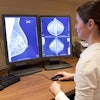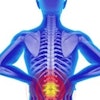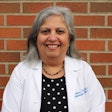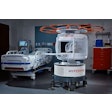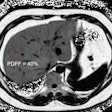
SALT LAKE CITY - While the Polyclinic staff gathered in the break room Monday to watch snowboarder Kelly Clark win the first U.S. gold medal of these Olympics, Dr. Laurie Lomasney sat down to reflect on another first during her time at the clinic.
"One of the orthopedists that I offered an ultrasound to doesn’t use it at all in his regular practice. He wanted to watch (the exam) to see what it is. So he was excited about expanding his repertoire. I think that this is the kind of atmosphere we’re going to find. People are here to have a good time medically, so they are interested in seeing something new," Lomasney said.
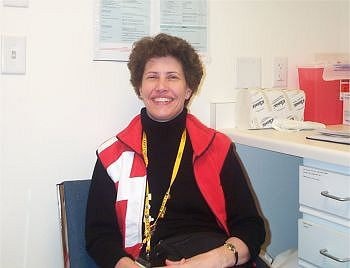 |
| SALT LAKE CITY, UT - Dr. Laurie Lomasney of Loyola University reflects on her time at the Olympic Polyclinic. |
Having the time and ability to work with referring physicians has been one of the highlights of her weeklong stay at the Polyclinic, said Lomasney, who is an associate professor at Loyola University, Stritch School of Medicine in Chicago. Her areas of expertise include general and musculoskeletal MRI, limited musculoskeletal ultrasound, and emergency radiology.
From a technology standpoint, there were some hits and some misses, in Lomasney’s estimation. Her own institution is about to implement a voice recognition system from Talk Technology of Bensalem, PA, so her time at the Polyclinic gave Lomasney a head start in that area.
"With Talk Technology, it’s been sort of a test period and I really like it. It likes me," she said. "I know everybody’s voice is different, but for me, it works fine. I think the transcription is great. The opportunity to use it here has given me ideas on little tactics and tricks that I can go back and use to improve recognition."
On the other hand, the PACS wasn’t quite what Lomasney was used to. "On MRI, for instance, I can’t cross-triangulate reference points between images. You can drop a scout line, but on a normal MR on the operator’s console, you can find a single point in space on one set of images, and then, if the patient hasn’t moved, it’ll be that same point in space on any other sequences. You can’t do that here and that’s something that I use a lot," she said.
Lomasney’s workload at the Polyclinic never quite reached a fever pitch, but the assignment did give her an opportunity to work with patients who were vastly different from her usual "workers' comp population." The kinds of injuries that would be debilitating in most regular people were taken in stride by many of the Olympics competitors.
"There was this ski jumper who had a microfracture in the substance of his calcaneus and the question was ‘Can he do his sport?’ I told him that it depends on how much you want to do your sport. Right now, it’s only a microfracture, but there’s no way to predict if it will complete itself. A lot of that depends on what the person will tolerate."
"But these (athletes) just want to know if they can compete, if it’s something that they can ignore for now to get through the Olympics," Lomasney added. "These are the kinds of injuries that in my standard workers' comp population, they would have been out for life."
By Shalmali Pal
AuntMinnie.com staff writer
February 12, 2002
Copyright © 2002 AuntMinnie.com
